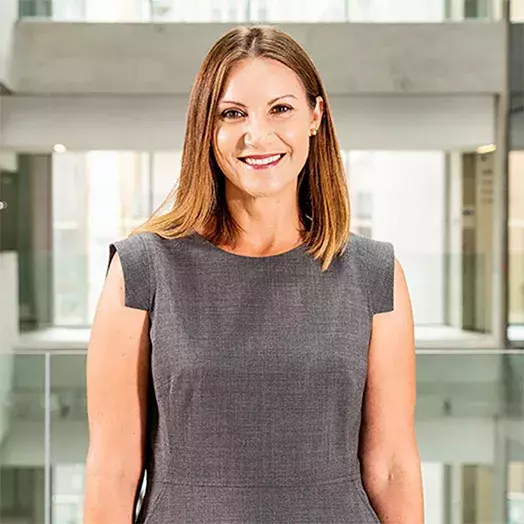An assistant professor of marketing at Carey Business School embarks on his latest research project examining consumer choice around generic drugs.

Generic vs. brand name and the cost of bad news
It was a phone call from an ailing family friend in his native Chile that inspired Manuel Hermosilla, a former assistant professor of marketing at Johns Hopkins Carey Business School, to embark on his latest research project examining consumer choice around generic drugs.
The pandemic was at its height and Hermosilla’s friend had recently been diagnosed with cancer. While she had called to discuss that news, she also wanted his help in tracking down hydroxychloroquine to treat her rheumatoid arthritis. At the time, the drug was in short supply in Chile; many people were stockpiling it, having heard it was a potential treatment for COVID-19.
Hermosilla quickly found two options: a generic version that would cost about $15 a month, and the branded version, which carried a hefty $330 monthly price tag.
“She didn’t want the generic version,” he recalls. “Given what she was going through with her cancer diagnosis and treatment, she felt it wasn’t ‘safe’ enough — which got me to thinking: When it comes to choosing between brand name and generic drugs, could medical-related insecurities impact patients’ brand vs. generic choices?”
According to Hermosilla and Carey Business School Professor of Marketing and Economics Andrew Ching, the answer to that question could have significant economic implications for the U.S. health care system. Their paper, “Does Bad Medical News Reduce Preferences for Generic Drugs?,” has been accepted for publication in the Journal of Marketing.
Noting that many experts view generics as molecular replicas of brand drugs, thereby delivering the same therapeutic value, the researchers suggest that broader uptake of generics could significantly lower expenditures without sacrificing the quality of patient care. The duo points to estimates suggesting substantial savings for the U.S. health care system — about 10 percent of drug expenditures, or $36 billion a year — if patients always chose a generic option when available.
Emotions and risk-taking
While much existing research has focused on “information gaps,” the idea that consumers lack information reassuring them of the therapeutic equivalency between generic and name-brand drugs, Hermosilla and Ching aimed to break new ground by focusing on how “negative information shocks” might impact patient decision-making. Their work builds on literature showing that negative emotions reduce risk-taking.
“Getting bad medical news can be alarming,” says Ching. “It might influence us to embark on a healthier lifestyle, by exercising more or eating healthier food. Given that brand name drugs are perceived to be more effective and perhaps even safer than generics, such news might also affect how we choose between drugs.”
These effects operate at a large scale and could be responsible for a significant amount of overspending, adds Hermosilla, given the high prevalence of negative “news shocks” that arise as we interact with the medical system. “Getting ‘bad news’ is an essential part of interacting with the health care system,” he says, whether that’s learning you test positive for a genetic cancer marker or that your BMI puts you in the “overweight” range.
At the ‘frontier’
For their study, Hermosilla and Ching focused first on the medical news that comes with blood testing results for LDL cholesterol. Specifically, they focused on the “frontier” between 129 mg/dL and 130 mg/dL LDL results — the borderline between “near optimal” and “borderline high” ranges, as defined by clinical guidelines.
“This is a very common medical test so there is a lot of data available,” says Ching, “and there is also a well-defined cut-off — 130 mg/dL — for the ‘bad news,’ which allowed us to directly compare two groups of patients.” It is also a useful test for the researchers’ analysis, Ching notes, because LDL levels are measured with a significant amount of error, such as variances in pre-test fasting. This means that there are no systematic differences in the health condition of the two types of individuals (129 vs 130 mg/dL).
Analyzing data from MarketScan, which tracks health care utilization for those living in the United States, the researchers examined 2,282 individuals with testing results that fell in the 129 mg/dL to 130 mg/dL range. Their analysis included all prescription drug choices made by the sample patients, covering almost 500 drugs across six drug classes.
The two researchers found that a “borderline high” LDL test result did in fact have an effect on drug choice.
Patients who had received bad medical news had a 1.3 percent reduced propensity to choose the generic option, compared to control patients, Hermosilla and Ching note in their paper. Given that brand-name drugs have a smaller share of choices than generics, this represents an 8-percent increase in the propensity to choose the brand-name option.
Factoring in the average 80 – 85-percent generic price discount compared to brand-name drugs, Hermosilla and Ching conclude that the “bad news” effect “implies roughly a 3% increase in total drug expenditures for the average patient.
Through further analysis of the data, Hermosilla and Ching found evidence of a marked “front-loaded” effect of the bad news: It is concentrated in the immediate aftermath of the test, the first 90 days, and is particularly influential for patients who are purchasing a drug for the first time. The researchers also found a relatively larger effect among healthier patients -- “They might be more surprised by the bad news,” Ching posits -- and patients whose LDL test results are part of a medical office visit.
Aiming to extend their findings, Hermosilla and Ching next turned to a different medical test: hemoglobin A1c, a blood sugar test that is used for diagnosing and managing diabetes. They focused on the 6.9- to 7-percent threshold that patients with diabetes use to manage their condition.
Analyzing 143,165 MarketScan drug claims associated with the 3,725 patients with blood sugar test results in the 6.9 percent to 7 percent threshold, “our results here again were generally consistent with the idea that patients become more risk-averse, opting for the brand name option when confronted with medical bad news,” says Ching.
What to Read Next

research
When non-monetary rewards have negative impactsBad news comes in different sizes
Hermosilla and Ching say their results should start a conversation around neutralizing the impacts of bad medical news on brand vs. generic drug preferences.
A first step, they note in their paper, is raising awareness that even routine medical tests can trigger behavioral responses such as the ones they document. While research around breaking bad news in the health care setting has traditionally focused on severe outcomes such as death or cancer diagnoses, expanding to include routine tests or diagnostics could lead to a better understanding about patients’ decisions and spending within the health system, they suggest.
More immediately, says Hermosilla, “one simple approach might be to remind patients of the equivalency of generic drugs via a text message just after they receive their test results.”



